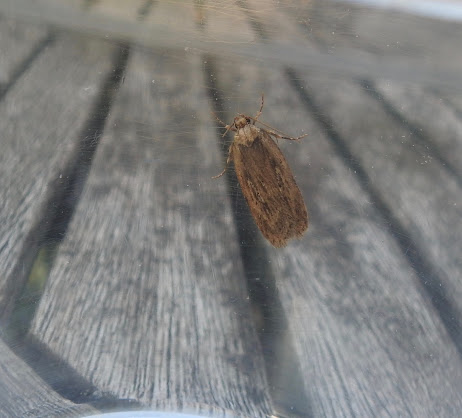If I had to pick the ideal date on which to visit Morton Bagot, it would be somewhere around April 22. This is mostly based on a great day in 2011 (before the blog) when I found two Wood Sandpipers and a Marsh Harrier. But a day or two either side should be fine.
Today was certainly fine. Wall to wall sunshine and a light easterly breeze. As I swung into the access road at Netherstead I noticed the first home grown Swallow perched on overhead wires. A good sign.
 |
| Swallow |
Whilst wandering back down the path to photograph it I heard a Willow Warbler singing from across the road. Whitethroats were popping up in new places and bursting into song. The vibe was good.
A little while later I was crossing the chat field when a faint set of scratchy notes pulled me up short. This is typical of the way I get my first Lesser Whitethroat of the year. A brief period of "did I hear something or not?" Then the tell-tale rattle which confirms I was right. Just as typically however, by the time I had made my way across the field it had shut up, and further searching was useless.
I resumed my original course and hadn't got far when another familiar newcomer burst into song. A Sedge Warbler was announcing his arrival from the hedge behind the pool field, and this time I was able to record the moment.
When I got to the flash field, things got even better. An Oystercatcher was standing, head tucked under its wing at the side of the furthest flash. My attempts to photograph it were frankly pathetic, but I'm going to show them anyway because this was the first one here for a couple of years.
 |
| Oystercatcher shimmering in the haze (i.e. out of focus) |
In my defence I offer exhibit A, some film of the bird designed to show how far away it was, and to elicit sympathy.
After a while it was disturbed by cattle and ultimately flew off.
Also present were three Shelducks, two Avocets, two Teal, and at least 17 Mallard. As I continued along the Morton Brook I realised I could hear Fieldfares. I spotted them in trees above the Kingfisher Pool, and got the scope out to count them and check for Ring Ouzels. There were 21 Fieldfares and no Ring Ouzels. However, when they took off I realised there were actually 42 Fieldfares (but still nothing else).
 |
| A tree full of Fieldfares |
These were the first Fieldfares here since about February, and was clear evidence that birds are on the move. Next stop Norway I reckon.
But the best was saved for last. I have been bemoaning the loss of the ploughed fields which normally guarantee Wheatears every spring, but clearly the Wheatears are willing to slum it in their favourite field, even though it's all weeds this spring.
 |
| Wheatear |
I took a million photos of the three birds (two males and a female), but have chosen this one because it shows not just the Wheatear, but also how parched the foliage is this April.
Although I would lose the little muddy edge developing on the nearest flash, the landscape needs some rain to get the plants going. Just not too much please.
As you might expect, the sunshine brought out lots of butterflies, with Orange-tips being particularly prevalent.
The moth trap goes out tonight, but with temperatures likely to be close to freezing it could be another poor showing for the GMS. Watch this space.
I caught six moths of six species as follows:
The most exciting of these was the Nut-tree Tussock. This is a southern species common in Worcestershire and Herefordshire, but scarce though increasing in Warwickshire.
 |
| Nut-tree Tussock |
The other new moth fell into the very small group of moths identified by me before I got a moth trap. In this case I recorded my only other Parsnip Moth on the kitchen window in 2017. So it now joins my moth life list for the first time (even though I've seen one before).
 |
| Parsnip Moth |
I must admit that its not the most inspiring species in the book, but they all count.
No comments:
Post a Comment